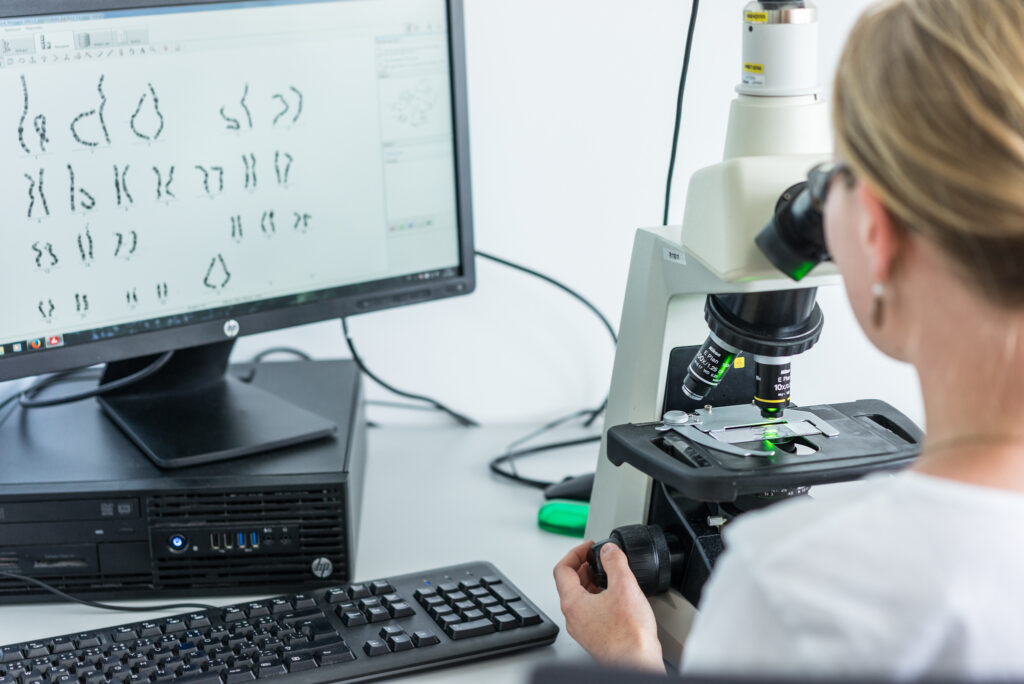Marfan syndrome is a rare inherited disease. There are more than 8,000 known rare diseases and they affect up to 4% of all babies born. In the case of Marfan syndrome, there is an additional 50% risk of transmission from parent to child.
What is Marfan syndrome and what is the probability of occurrence
Marfan syndrome is an inherited disorder affecting the connective tissues. People with this disease do not make fibrillin. This is an important substance that binds connective tissue cells together. A lack of fibrillin in the body causes the tissues to tighten.
What are the most common symptoms of Marfan syndrome?
The syndrome encompasses a wide group of symptoms. A person with Marfan syndrome has:
- typically tall in stature
- long, thin limbs
- long, thin fingers
- dislocation of the lens of the eye
- an anomaly of the heart and blood vessels
The prognosis for people with Marfan syndrome is often unfavourable precisely because of the cardiovascular impairment.
Marfan syndrome in children and how it affects their lives
The manifestations of Marfan syndrome start to appear in a child around his or her 10th birthday. The lack of fibrillin in the child’s body causes the tissues to tighten. The child is tall and thin. The joints have an abnormal range of motion. The bones of the limbs and fingers are longer than normal. The sternum often protrudes or is sunken. There are often problems with scoliosis.
Most children with Marfan syndrome have atypical heart valves that cause a heart murmur. About half of affected children have myopia. People with Marfan syndrome usually live to about 50 years of age and often die of heart disease.
Can Marfan syndrome be treated?
Marfan syndrome cannot be cured, only some of the abnormalities and symptoms that occur can be corrected. Aortic dissection is usually treated with surgery. During surgery, the affected part of the aorta (most commonly the aortic root and ascending aorta) is removed and replaced with artificial material. Ocular lens ectopia is also treated surgically by returning the lens to its correct position.
Can child birth or transmission be prevented?
Currently, the only reliable method of preventing transmission of the disease to offspring is preimplantation genetic testing for monogenic disease. We have been working on this method at Repromeda since 2000. The principle is to select an embryo that does not have the specific mutation that causes the disease and then introduce the selected embryo into the uterus.
Which couples is PGT-M suitable for?
Preimplantation genetic testing of embryos for monogenic disease is intended for couples where there is a proven risk of transmission of a serious genetic disease that is transmitted by a single gene disorder from parent to offspring.
- A child has already been born in the family affected by a rare inherited disease.
- At least one of the parents is a carrier of the rare inherited disease.
- One of the partners has a rare hereditary disease himself.
- The rare inherited disease occurs in a relative.
Why take the PGT-M at Repromeda?
- We perform PGT for all rare diseases and all types of mutations.
- Individual approach – we always try to find the best solution for a given family.
- We have more than 20 years of experience in PGT.
- We are the first centre not only in the Czech Republic, but in Central and Eastern Europe that has successfully performed PGT.
- We have helped more than 1,000 families with hereditary monogenic disease
- We have accredited the PGT method according to the international medical standard ISO 15189.
- We have made hundreds of couples happy who have conceived and delivered a healthy baby despite their burden.
Make an appointment for a consultation or examination at a clinic in Brno or Ostrava.



